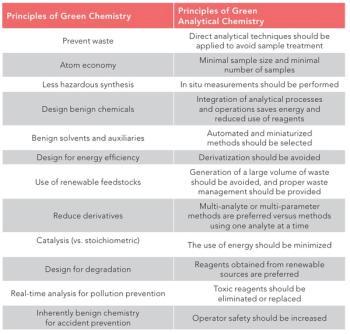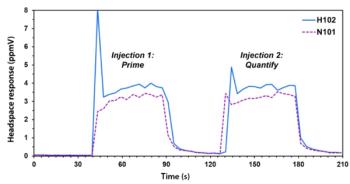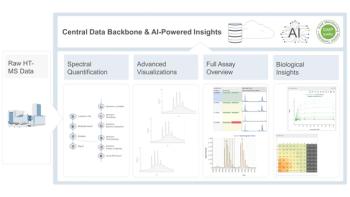Key Points
- A generic gas chromatography (GC-HS) method was developed to efficiently quantify residual solvents in APIs per ICH Q3C(R8) guidelines.
- The method uses a mid-polarity GC column and DMI as diluent to ensure broad solvent compatibility and minimal interference.
- It demonstrates strong linearity, sensitivity, and resolution, suitable for multiple solvents across API projects.
- The approach reduces method development time and simplifies validation, improving lab efficiency and regulatory compliance.
This article discusses a generic method for determining residual solvents in active pharmaceutical ingredients (APIs) using gas chromatography (GC). Solvents, which are used and formed during API synthesis, need to comply with regulatory guidelines due to their varying toxicity levels. The study highlights the International Council for Harmonisation (ICH) Quality Guideline Q3C(R8) regarding residual solvents and presents a generic GC method that can save pharmaceutical companies significant method development time. The use of positive displacement pipettes is emphasized for accurate transfer of non-aqueous and volatile liquids.
In the pharmaceutical industry, solvents are the medium where synthetic reaction components are dissolved prior to performing chemical synthetic steps for active pharmaceutical ingredients (APIs). Solvents can also be formed as by-products of synthetic processes. Solvents have varying degrees of toxicity and their levels are limited by regulatory guidelines. After the API is isolated, a material quality objective is to dry the material so that the solvent levels comply with the regulatory guidelines. Gas chromatography (GC) is a key technique to determine residual solvents. The study presented here provides a generic testing basis that is applicable to many of the common solvents used in the pharmaceutical industry. Utilization of these generic GC method conditions could yield substantial savings of method development time for pharmaceutical companies.
Some examples of commonly used residual solvents and their structures are presented in Figure 1.
The International Council for Harmonisation of Technical Requirements for Pharmaceuticals Use (ICH) Guidelines details the requirements for quality attributes for the manufacture of drug substances. The specific regulatory guideline that details the quality requirements for residual solvents is Q3C(R8) (1).
Technique for Determination of Residual Solvents
The potential efficiency gains from establishing a single set of method conditions from which a robust and reliable quantification of residual solvents can be consistently obtained has been recognized.
Equipment for Quantitative Liquid Transfers
For all solvent transfers it is essential to use positive displacement pipettes; during the study, it was determined that this design is more amenable for the accurate transfer of non-aqueous and volatile liquids.
Selection of Residual Solvents for Study
The selection of solvents for inclusion in the generic method were based upon a review of the residual solvents that are required to be tested across a range of API manufacturing projects. ICH quality guideline Q3C(R8) lists the residual solvents most likely to be tested, with the safety classifications stated as follows:
Class 1 Solvents: Solvents to be Avoided
Known human carcinogens, strongly suspected human carcinogens and environmental hazards (This article does not cover the scope of Class 1 Solvents. This class of solvent is always controlled to very low ppm levels; control to these levels typically requires the development of high‑sensitivity methods.)
Class 2 Solvents: Solvents to be Limited
Non-genotoxic animal carcinogens or possible causative agents of other irreversible toxicity such as neurotoxicity or teratogenicity.
Class 3 Solvents: Solvents with Low Toxic Potential
Solvents with low toxic potential to humans; no health-based exposure limit is needed. Class 3 solvents have permitted daily exposure (PDE) limits of 50 mg or more per day.
With consideration to the above, a final list of residual solvents to be included in the study for the development of a generic GC residual solvents method was compiled as detailed in ICH Guideline Q3C(R8) and based upon option 1 with a daily product dose of 10 g.
Generic Method Conditions
A 60 m × 0.32 mm, 1.80-µm GC DB624 column (Agilent Technologies) was chosen. This is a methyl polysiloxane column with 6% cyanopropyl-phenyl groups and is a mid-polarity column. The column polarity has a broad range of applicability for retention and separation of a range of solvent polarities and volatilities. The sample introduction technique of headspace sampling (GC-HS) was chosen for this generic method. Headspace sampling is a sample introduction technique whereby a drug substance is dissolved in a suitable solvent matrix. This solvent matrix is typically a high boiling solvent in a sealed glass vial with a volume of 10 mL. The solution is heated to a set temperature for a specified time to establish a partition of the relatively volatile analyte solvents between the solvent matrix and the “headspace” gas in the 10 mL glass vial. The vial headspace is sampled using a probe.
GC-HS was chosen as the base of the sample introduction for this generic method for the following reasons:
- The GC-HS sampling technique does not directly introduce solutions of API directly into the GC instrument injection port, avoiding injection port contamination.
- GC-HS sampling provides an enhanced response for more volatile solvents as a result of favourable gas phase partitioning.
Experiments were performed to establish the thermal gradient conditions to achieve the optimal resolution of all solvents. The study was performed on an Agilent model 7694 gas chromatograph equipped with a model 7697 headspace autosampler. The GC conditions were as follows: carrier gas: hydrogen; thermal gradient; headspace sampling.
The GC headspace autosampler conditions were devised based upon the boiling points of the solvents tested as part of the generic method. The range of boiling points for the solvents included in the method were 39.6 °C for dichloromethane to 189 °C for dimethylsulphoxide. The GC-HS temperatures were selected based on keeping them as low as possible but ensuring sufficient sensitivity for the higher boiling solvents in the mixture to minimize API degradation during vial heating. This was to reduce the likelihood of interfering peaks originating from degradation of the API material. The diluent used for the standard and samples was 1,3-Dimethyl-2-imidazolidinone (DMI).
This selection was made based on its high boiling of 225 °C, which facilitates a distinct separation from the residual solvent analytes; the solvent peak has a sharp profile, which minimizes nterferences and there is no tailing. The solvent blank profile was sufficiently free from interferences, with the residual solvent peaks suitably specific to facilitate accurate quantification of residual solvents in test samples.
Mixed Stock Standard Preparation
The solvents were prepared at concentrations equivalent to the specification limits according to equation 1. A 50 mg/mL measure was selected as the sample concentration and was prepared in the DMI solvent.
The factor of 400 factors the relative standard and sample dilutions to re-calculate the target standard weight for different ICH limits and sample preparation concentrations.
The target standard weights were attained by volume dispensation from a consideration of the densities stated in Table 1, which facilitates a faster standard preparation.
Mixed Standard Preparation
A 4.0 mL measure of the mixed stock standard preparation was diluted to 100 mL with DMI and mixed thoroughly.
Results
Summary
A review of the chromatography for the DMI blank concluded that it was sufficiently free of interference (see Figure 2). The resolution of the solvents in the mixed standard was sufficient to be suitable for accurate quantification (USP resolution ≥1.5). Based upon these results, the diluent blank and mixed standard chromatogram profiles were considered suitable as a basis for the generic GC method conditions.
Method Qualification, Linearity
The linearity of the response for each residual solvent was evaluated across the range of 10% to 120% of the respective ICH limits and was determined to be suitably linear across this range for each of the solvents with insignificant intercepts. A summary of the linearity study parameters is presented in Table 2.
Method Qualification, Sensitivity
Residual solvents testing is regarded as a limit test. We consider 10% of the specification limit to be the level declared as the limit of quantitation (LOQ). For API release testing, the testing requirement is that the levels of the residual solvents are below the specification (commonly ICH) limits.
Method Qualification, Accuracy
The method was designed to be considered as a generic and robust set of method conditions for which suitable linearity has been established. As the generic method was intended to be used for several different API products, it is recommended that a check for method accuracy is performed when applying the method to new API materials. This can easily be accomplished by dissolving the API sample material in the mixed standard preparation at a level of 50 mg/mL. For spiked sample preparation, select a sample that does not contain high intrinsic levels of the residual solvents of interest.
Modification for Different Material Dosage Levels
The suggested standard and sample preparations are based upon ICH Q3C (R8) option 1 for a daily dosage not exceeding 10 g. If there are instances where there is a requirement for a higher daily dose, then the sample preparation can be modified according to equation 1 to ensure that suitable sensitivity is obtained.
Conclusion
- The method conditions are available for users to readily set up and facilitate on a GC system, mitigating the need to repeatedly take down and set up the system, helping to drive laboratory efficiency.
- There is assurance of a high quality separation method, whose scope includes all residual solvents likely to be encountered.
- Linearity, sensitivity, and specificity for the solvent blank are pre-demonstrated and consequently the scope of the required method validation is reduced.
Reference
(1) ICH, Q3C(R8) Impurities: Guideline for Residual Solvents, Step 4 version (2021).
About the Authors
Correspondence: almacanalytical@almacgroup.com





